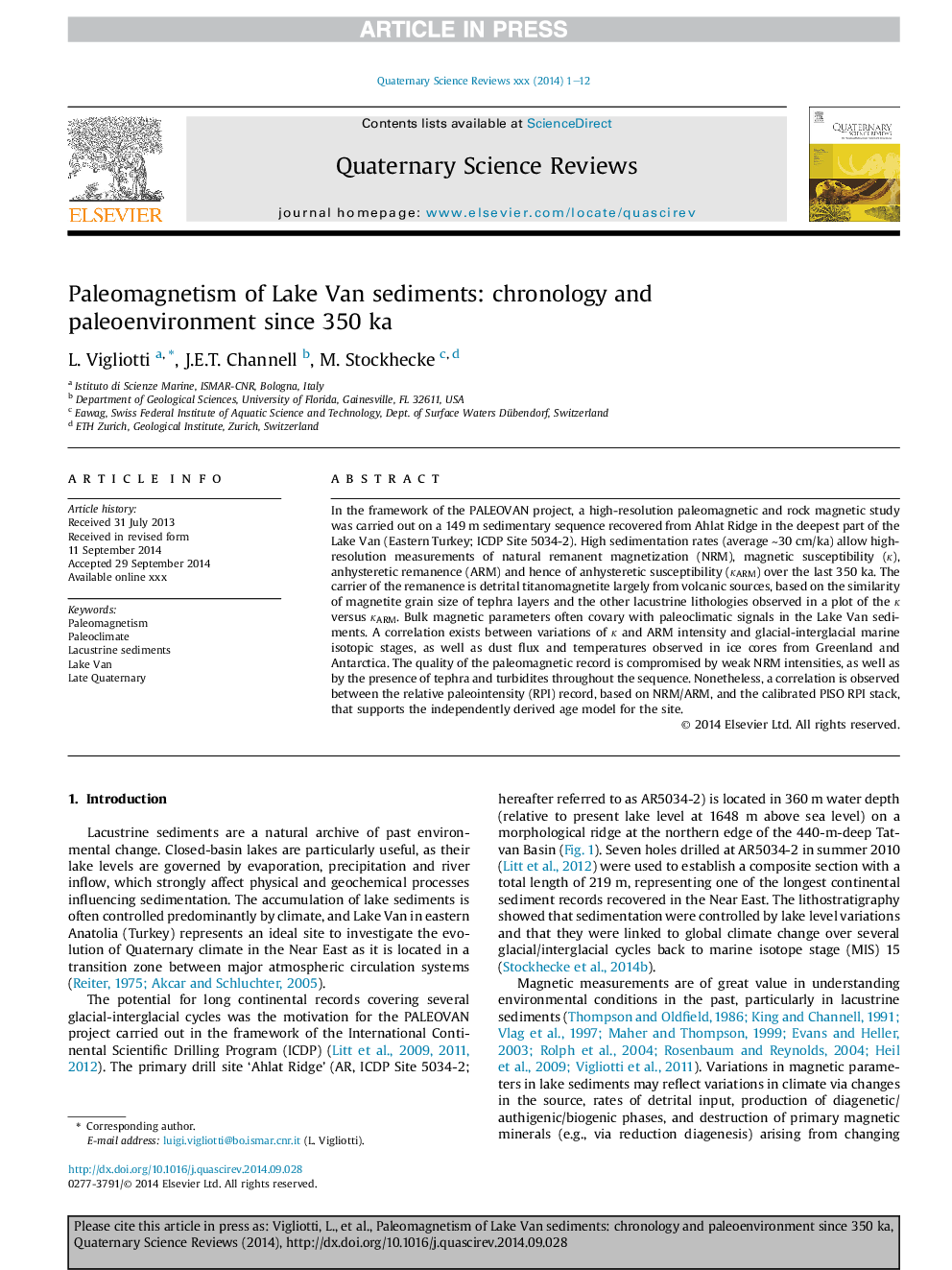| Article ID | Journal | Published Year | Pages | File Type |
|---|---|---|---|---|
| 6445544 | Quaternary Science Reviews | 2014 | 12 Pages |
Abstract
In the framework of the PALEOVAN project, a high-resolution paleomagnetic and rock magnetic study was carried out on a 149 m sedimentary sequence recovered from Ahlat Ridge in the deepest part of the Lake Van (Eastern Turkey; ICDP Site 5034-2). High sedimentation rates (average â¼30 cm/ka) allow high-resolution measurements of natural remanent magnetization (NRM), magnetic susceptibility (κ), anhysteretic remanence (ARM) and hence of anhysteretic susceptibility (κARM) over the last 350 ka. The carrier of the remanence is detrital titanomagnetite largely from volcanic sources, based on the similarity of magnetite grain size of tephra layers and the other lacustrine lithologies observed in a plot of the κ versus κARM. Bulk magnetic parameters often covary with paleoclimatic signals in the Lake Van sediments. A correlation exists between variations of κ and ARM intensity and glacial-interglacial marine isotopic stages, as well as dust flux and temperatures observed in ice cores from Greenland and Antarctica. The quality of the paleomagnetic record is compromised by weak NRM intensities, as well as by the presence of tephra and turbidites throughout the sequence. Nonetheless, a correlation is observed between the relative paleointensity (RPI) record, based on NRM/ARM, and the calibrated PISO RPI stack, that supports the independently derived age model for the site.
Related Topics
Physical Sciences and Engineering
Earth and Planetary Sciences
Geology
Authors
L. Vigliotti, J.E.T. Channell, M. Stockhecke,
